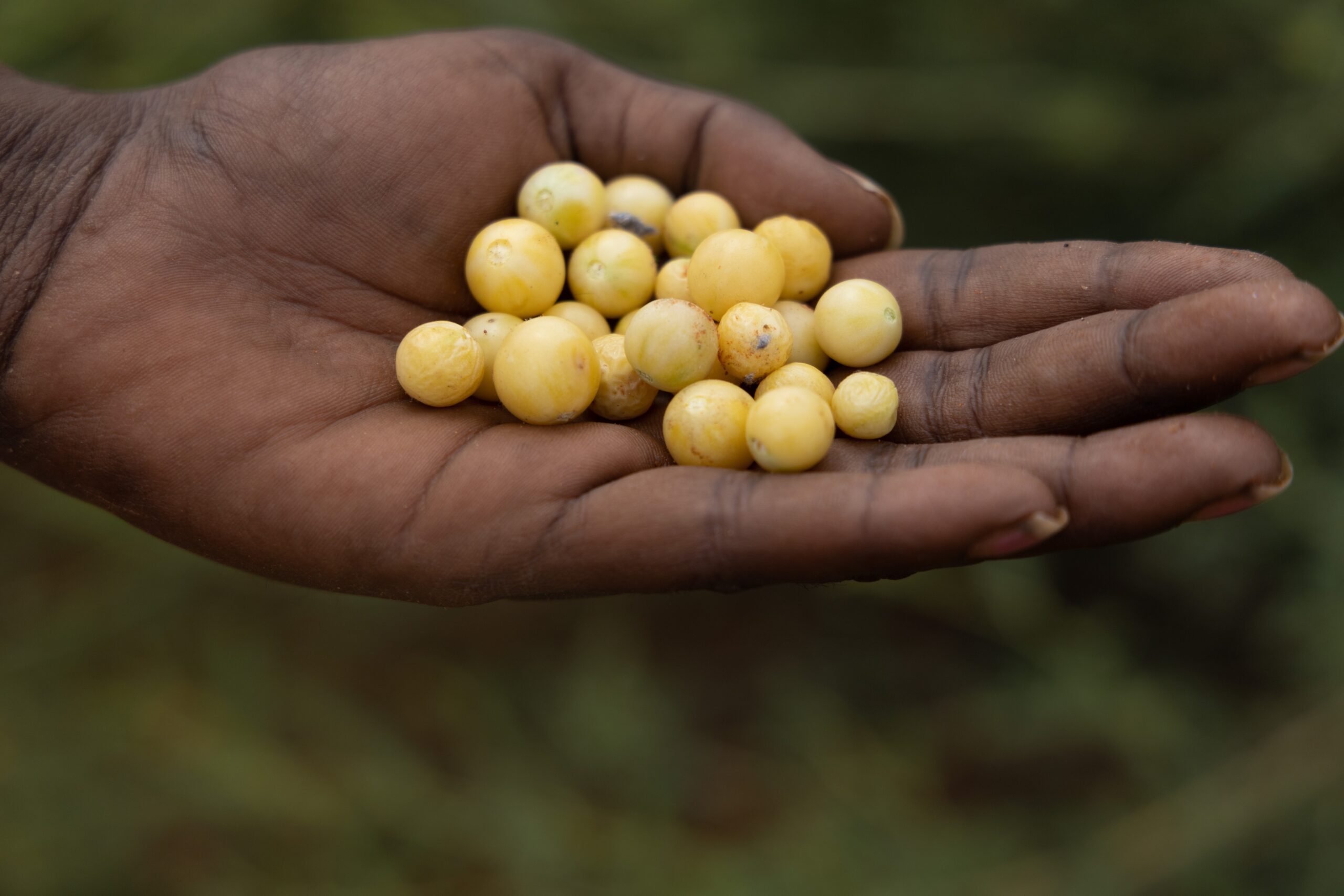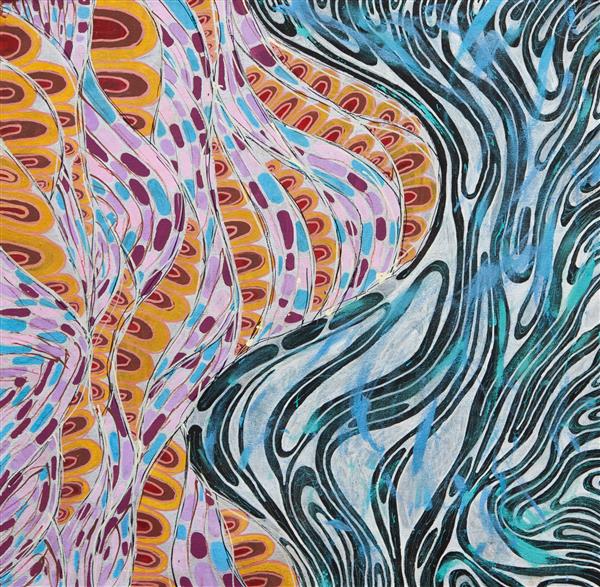For our Mirrka (Bushfoods) exhibition, more than eighty artworks explore traditional bushfoods in an immersive setting. Swags and a continuous basket weaving circle within the gallery space work to “make people feel like they’re in the bush, collecting bushfoods, when they’re experiencing the paintings. Sitting on a swag and making baskets, having that getting away feeling in the gallery” (Sylvia Wilson, exhibition curator).
Opening Friday 30th June at the Martumili Artists gallery in Newman is Mirrka (bushfoods), an exhibition our artists have been working toward since 2021. Mirrka brings into view many of the bushfoods that have sustained Martu people over thousands of years, along with the incredibly rich knowledge of these foods that has been passed through countless generations. It represents the second instalment in a five year, three stage, collaborative project between KJ (Kanyirninpa Jukurrpa) and Martumili Artists aimed at preserving and communicating traditional Martu knowledge of Country.
Mirrka began with two project bush camps held in 2021 and 2022. These camps, held on Country with Martu women ranging in age from seventeen to eighty-three years, provided an ideal space for elders to teach young Martu women about plant identification, harvesting and preparation. Though some of the bushfoods represented in the exhibition, such as jinjiwirrily (wild gooseberry), minyarra (bush onion) and wamurla (bush tomato) continue to be popularly consumed within Martu communities today, many others are rarely gathered nowadays due to the labour-intensive processes associated with their harvesting and preparation. As such, the camps offered an invaluable opportunity for young women to learn about some of the now lesser-known traditional bush foods.
Mirrka has always been a popular subject for Martu artists, but following the camps the number of bushfood based works exploded. When asked why bushfoods are so inspiring for artists, Sylvia Wilson (Martumili Artists gallery assistant and head curator for the Mirrka exhibition) explains that “It’s getting back to traditional ways and living off the land hunting and gathering… Food brings people together. Going out and getting bushfoods- having the knowledge and knowing how to go out there and do it- makes people feel proud.” She also noted that the project has helped many of Martumili’s emerging artists to gain confidence in their art making; “It’s gotten young artists into a safe space of painting about bushfoods with the senior artists at Martumili, like grandchildren with their grandparents. Now they’re starting to paint their own stories about community and Country.”

Central to the Mirrka exhibition, comprising paintings, woven sculpture, baskets and photographic works, is “Bush Tucker”, a 1.25 x 3 metre painting featuring the names of eighteen different types of bush foods with corresponding visual representations. Begun during the two project camps and continued for many months afterward by young women alongside their elders, the work clearly affirms the invaluable cultural knowledge that has been passed, and has itself become a significant and enduring learning resource. This collaborative work also serves to encapsulate the relationships threading from the very youngest to the most senior women artists painting with Martumili, through which traditional cultural knowledge has been, and continues to be conducted. Indeed, the work is synonymous in nature to the project’s overarching objective to foster opportunities for intergenerational learning. This resonance continues with Mirrka’s opening over this year’s NAIDOC week celebration (between July 2nd – July 9th), where “For Our Elders” is this year’s theme.
Words: Ruth Leigh
Feature image: Brianna Booth




